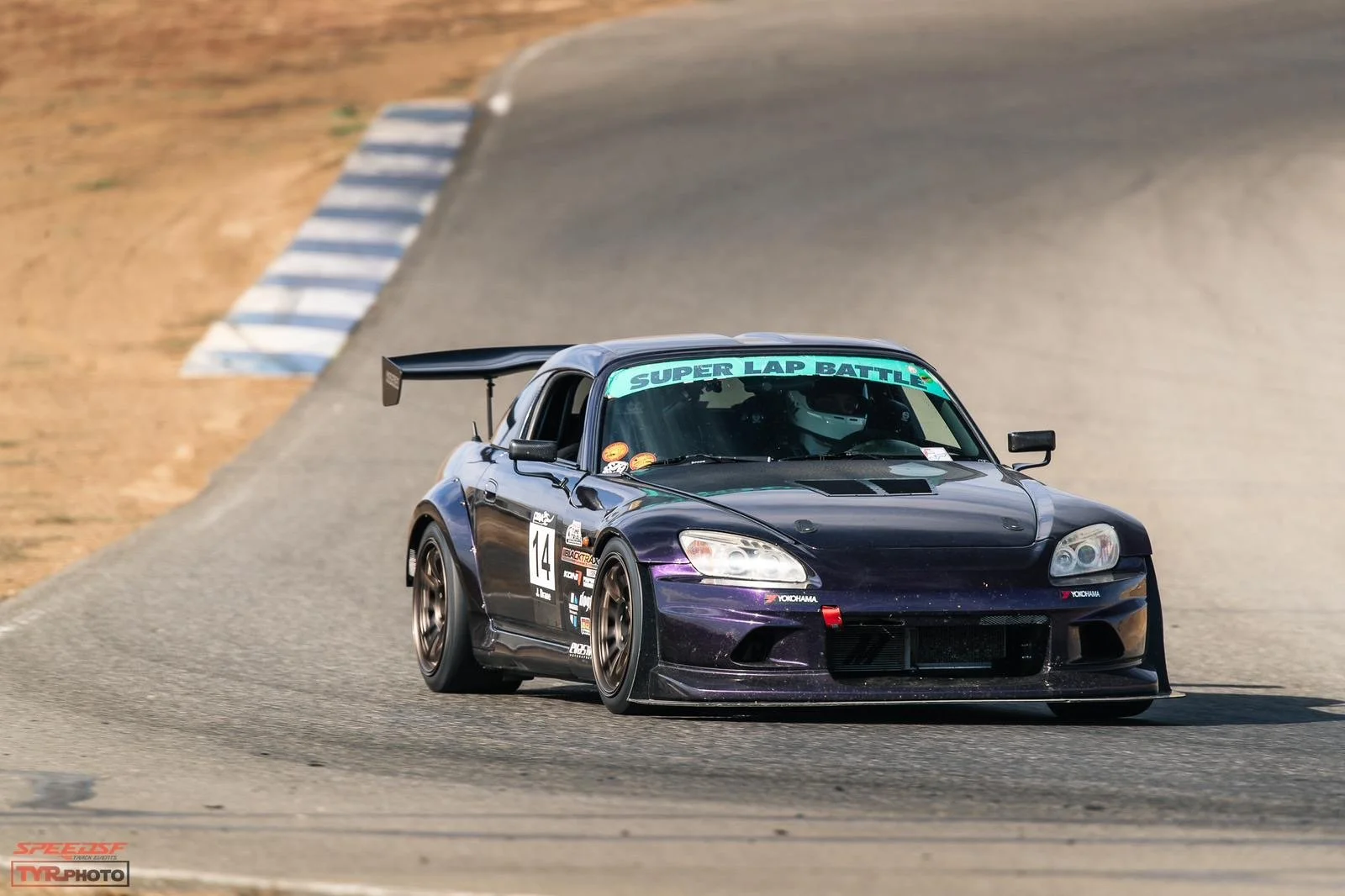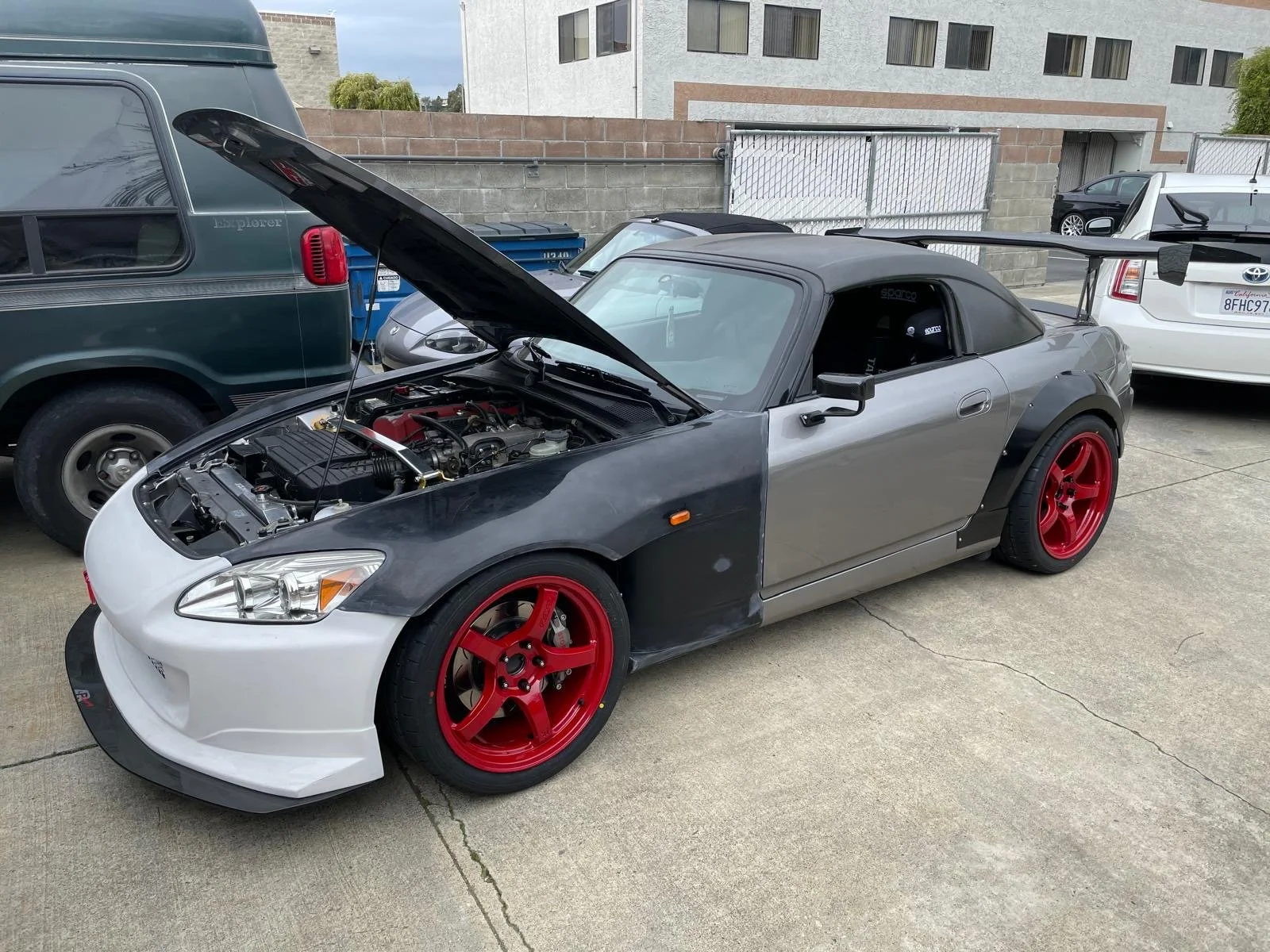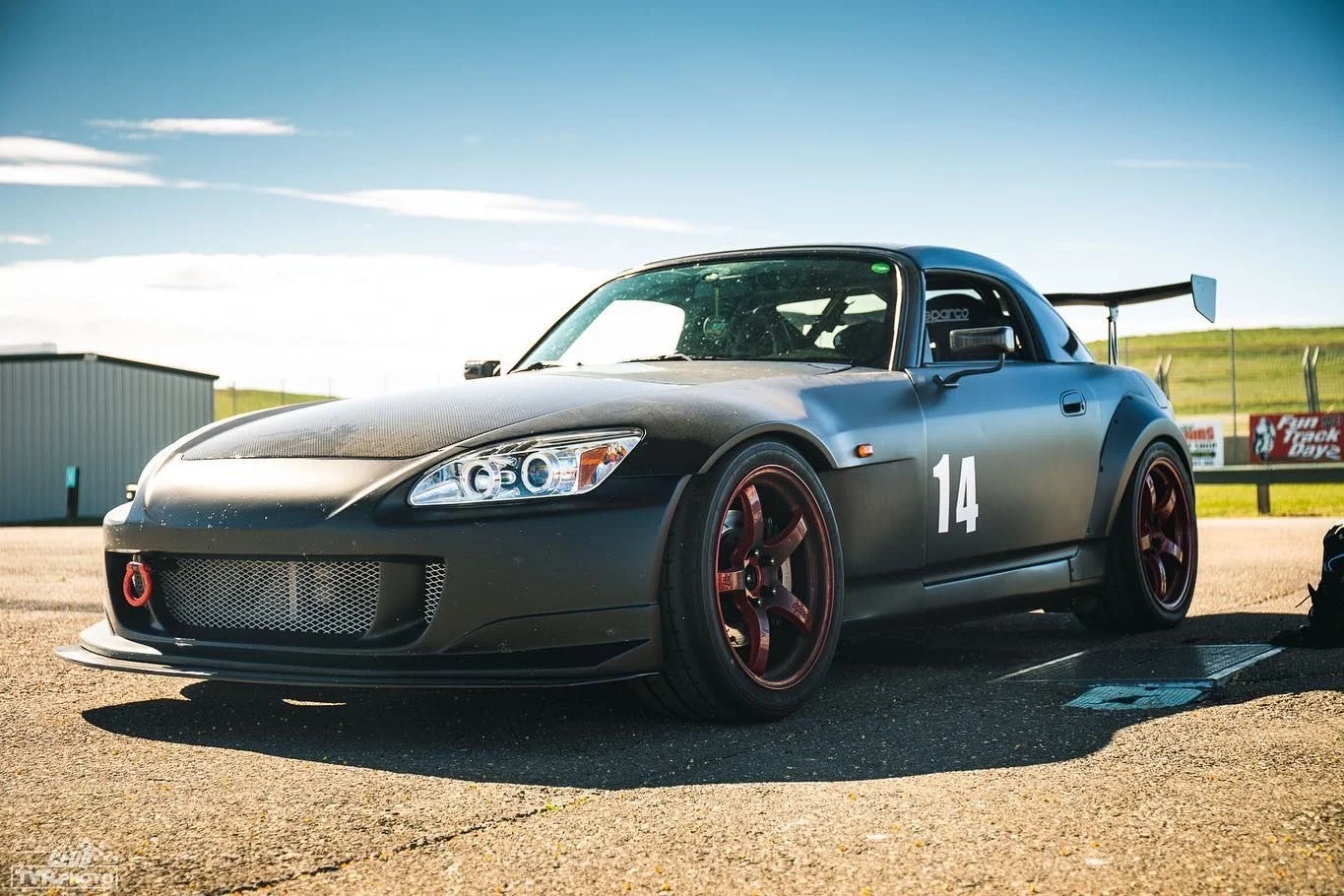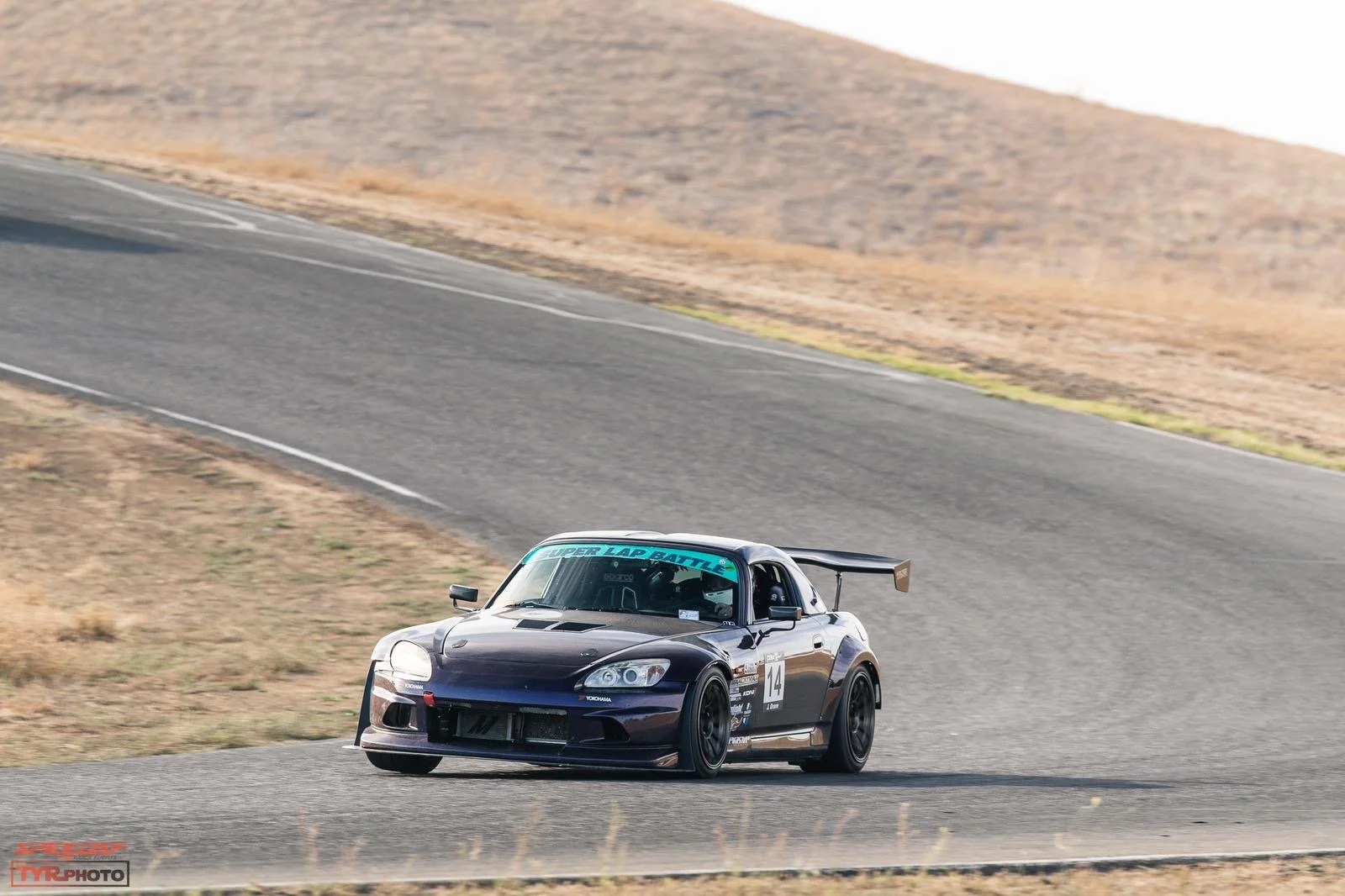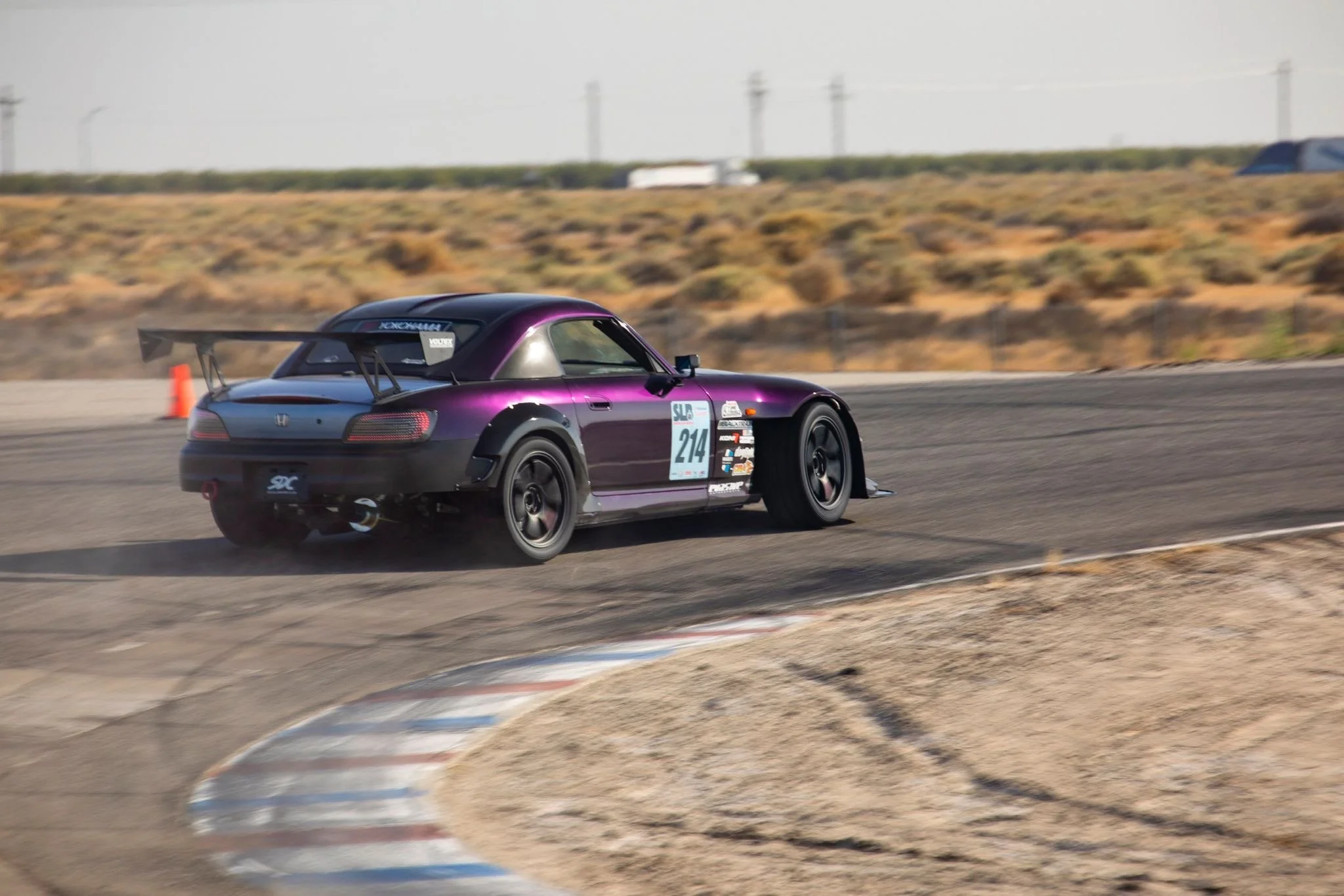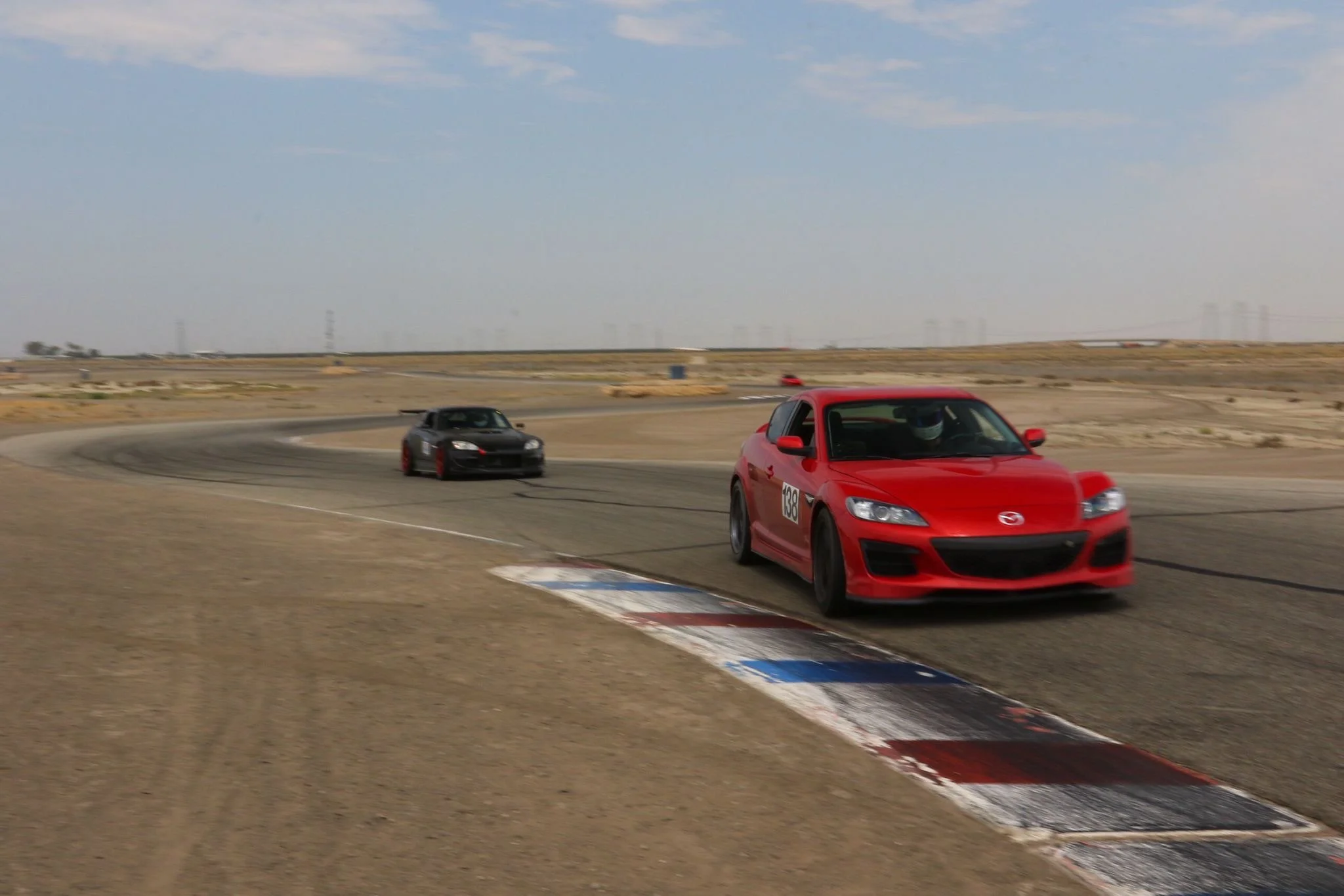Joe’s AP1 S2000: Continuing Education
It wasn’t until Joe Drane moved out to California at the ripe age of 38 that he was able to try track driving for himself. Being a natural tinkerer and a bit of a hot rodder growing up, track driving had been a lifelong dream, but the opportunities for that sort of thing in rural Florida were few and far between.
After teaching him the ins and outs of network engineering, Joe started learning the cloud and found a few roles with startups in Texas. This created a focus on execution and continuous learning while also placing high value in data helped him put together a stellar resume in short time. This almost obsessive approach would later help Joe learn at a ridiculously rapid rate when learning the racing ropes.
The Land of Milk and Honey
After relocating to San Francisco to start a new role with Facebook, the assortment of beautiful sports cars lining the streets suggested he might be in the right place to learn to drive on track. He searched for ins on the pages of the local sanctioning bodies until he found an easier, more cost-effective way to dip his toe in the water.
Meanwhile, the need for a new outlet was getting harder to ignore. COVID weighed heavily on him, and while he loved his new job, it didn’t offer the distraction he needed mid-pandemic.
When he proposed running a few lapping days one weekend, his wife not only supported him in his decision, she helped him find an appropriate track car. Incidentally, the two had met at work after Joe spotted her leaving her S2000 in the parking lot. It only seemed right that such a car, the conversation starter, would help him start another love affair.
And so he picked out the cheapest first-gen S2000 he could find. This was several years ago, but even by the standards of the time, this car was affordable — and for good reason. “It was just a mess. It had no rear glass, the check engine light was on, the wiring was a rat’s nest, and the motor was ticking. I spent the winter restoring it, but I didn’t realize just how bad things were until I started working on it.”
Growing Pains
“I ran into some issues installing the aftermarket parts. The radiator wasn’t sitting low enough for the hood to close. I took it into the shop at BlackTrax to have it inspected, and there the mess continued to unfold. The radiator supports were bent, and I couldn’t purchase new ones anymore. I had to source the brackets from two fender cutouts from eBay.
Then we pulled the cylinder head and saw the valve retainers were cracked, there was a ton of carbon on the valves, and two of the cylinder walls were scarred. After ten track days, the transmission blew third gear. Oh man, what a nightmare it was.”
To mend the ailing engine and fortify it for track use, he replaced the block with rebuilt F22’s, then fitted a Radium catch can as well as Mishimoto’s radiator and oil cooler. Not eager to deal with another blown F-series, he wisely spent a few thousand more on a Link G4+ ECU to employ several failsafes and extract everything from the motor — mainly more mid-range torque and a peak of 227 horsepower at the wheels.The Link was then paired to an AiM MXG dash which to give him alerts and relay lap data.
Despite the early hurdles he had to cover, he remained willing and able to push on. The obsessive drive which fueled Joe’s career now had a second outlet; allowing him to research the engineering involved, pick parts, test them on track, and build a more supportive social network than the one which work provided him.
As it gave him a new lease on life, he didn’t hesitate to spend whatever was needed to turn this rough example of an S2000 into something exceptional. Within a few months, he’d added a long list of modifications to try and breathe some new life into this aging chassis.
After investing so much in the performance side of things, it made sense to apply an Inozetek wrap to help the car pop.
Among those additions were an APR splitter, a Voltex Type II wing, Rockstar Garage’s Feal two-way coilovers, and Stoptech C43 (F) and C42 big (R) brakes. Studying hours of onboard footage — namely Nate Hackman’s banzai laps — helped him understand just how much harder he could apply the brakes and how severely late he was getting to throttle.
In the interest of getting up to speed quickly, he skipped the cheap tires and went straight to a set of Yokohama Advan A052s, then wrapped them around a set of 18 x 9.5” Advan Gram Lights.
Though he’d already spent a small fortune on parts, never once did Joe agonize over expense during this introductory period. “I decided to pay for an education in racing since I feel it usually pays dividends,” he said. When his engine tuner Jei from BlackTrax offered to tag along to one HPDE at Thunderhill and teach Joe to study data, he jumped at the opportunity. “The telemetry revealed I was shifting a little too much, so we figured out the right shift points and instantly cut a couple seconds off my PB.”
The car was capable and reassuring enough for Joe to continue pushing, but asking more the car led to the standard Torsen differential failing. In its place, Joe put a Puddymod 1.5-way OSG and found the incremental improvement in power-down and stability motivating enough to invest in one other area that wasn’t quite up to snuff: dampers.
Joe knew the top-shelf option would make the car more quicker, more predictable, and less taxing to drive, so he splurged on a set of Blacktrax-built Penske 8300s. Even without much knob turning, the new dampers revitalized the car and helped Joe find the confidence to commit to the quick corners. “My favorite mod, without question. I dropped six seconds off my previous best the first time out on the Penskes. Worth every penny.”
Continuing Education
Learning to wrench and approach the track from a theoretical perspective helped him progress, but never having attended a racing school, he started to wonder if there were ways to improve his technique post-haste. He enrolled in a few drift courses to study the art of oversteering, and soon felt at ease asking the S2000 to rotate a little more than before.
Both his approach and the S2000’s setup are far from perfect, and Joe’s wise enough to admit that. “I haven’t thought much about adjusting the dampers — most of the time I just leave them in a neutral position and try to drive as best as I can.”
But the results from a relatively short time spent on track speak for themselves. He’s learned at a remarkable rate and, with a little more guidance from the knowledgeable group of friends he’s made recently, he’s bound to be fighting for podiums at the front of the S3 class sometime soon. He still has a few points to play with — and they’ll go towards a Zebulon rear wing, a larger Alumalite splitter, and Professional Awesome tunnels.
Joe’s studious nature has also helped him better understand the endless tradeoffs that building a track car requires. While the major cost associated with getting a rough car off the ground can eat into an aspiring driver’s budget, the peace of mind that comes from driving a flawed, imperfect car can help a driver push hard — harder than they likely would in a pristine example. That’s why he has no regrets taking the rocky but fruitful and informative path he took.

